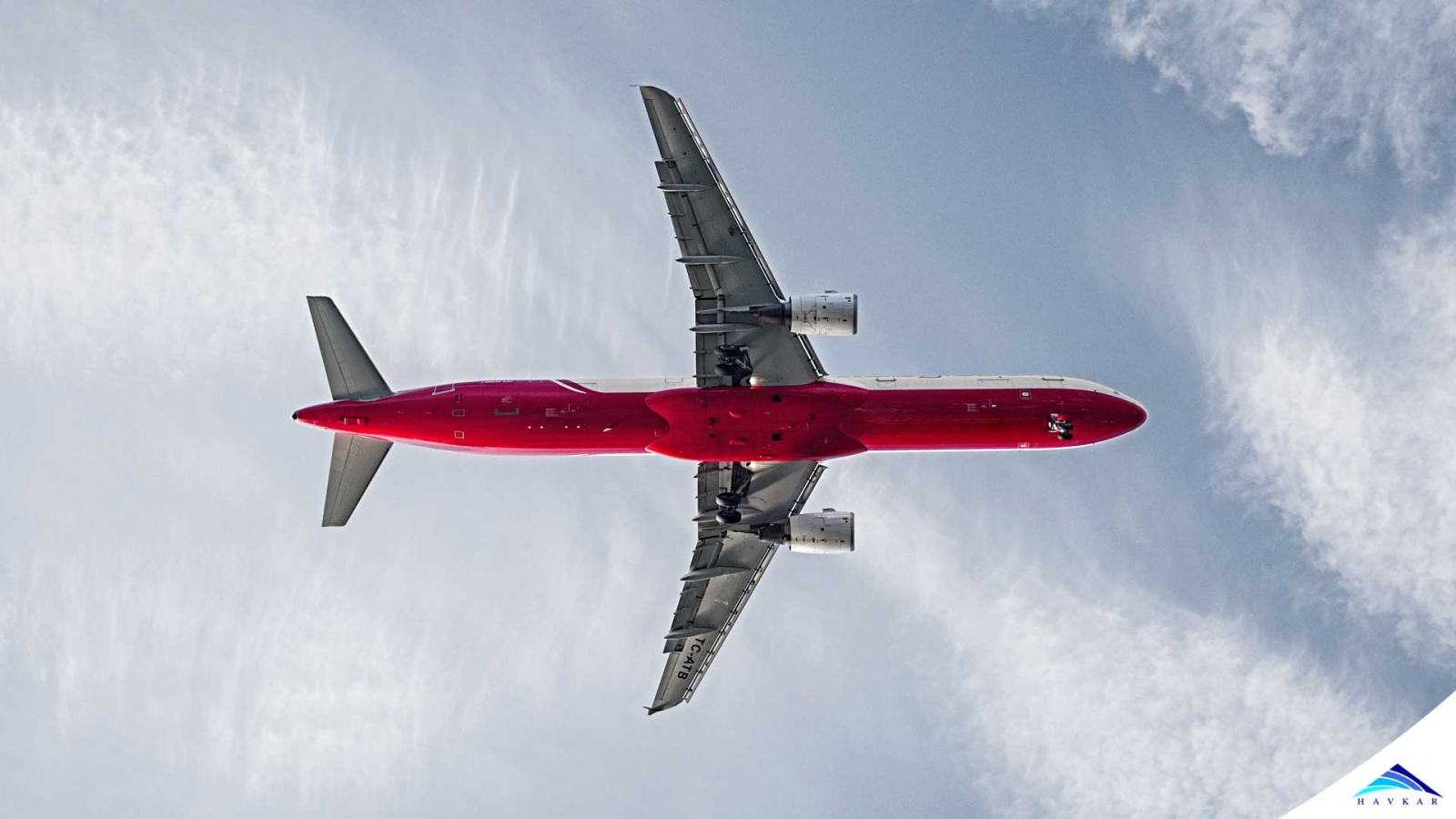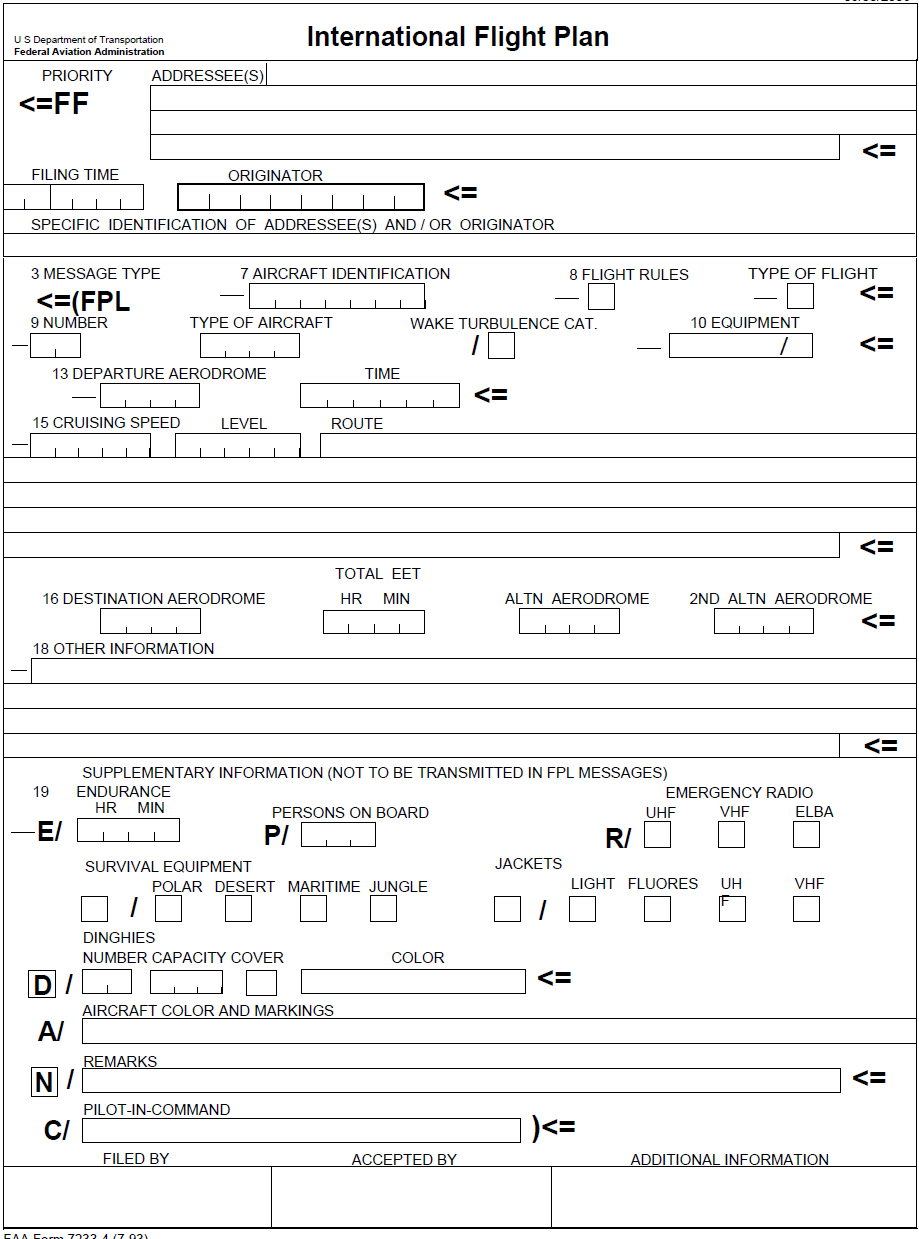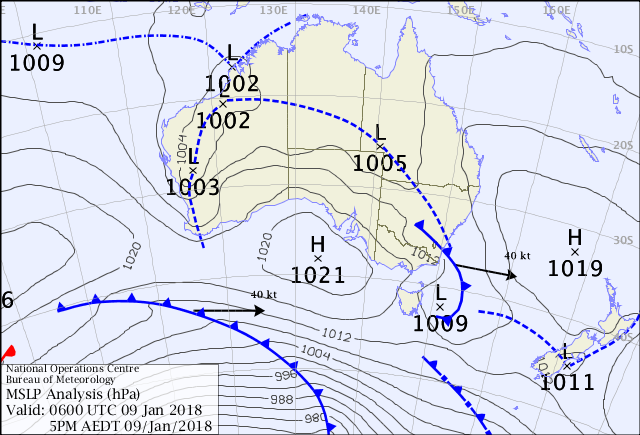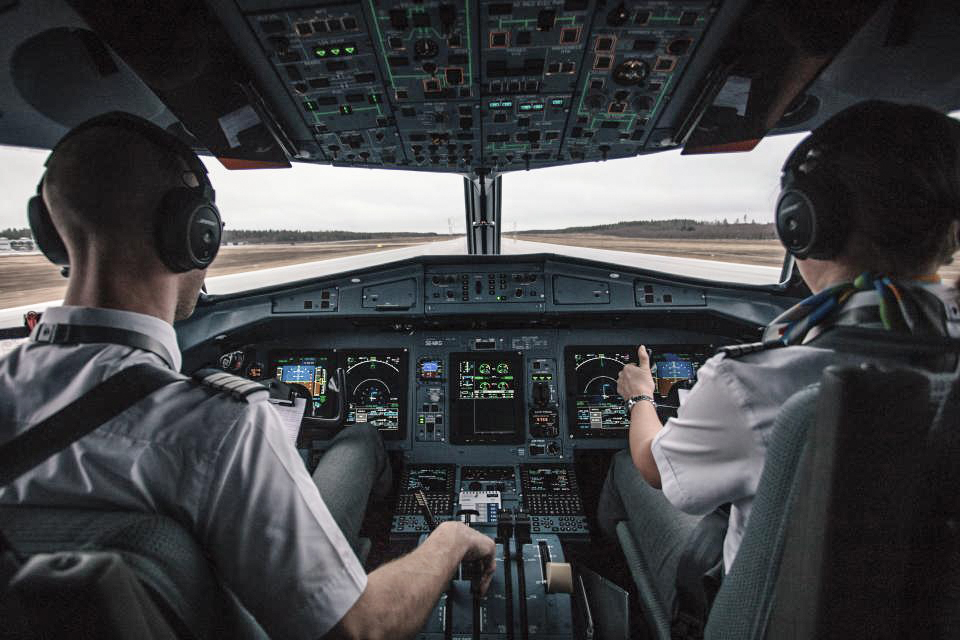
The typical day of an airline pilot begins at the Operation Centre, which is a building where the crews meet and carry out the briefing before going together into the aircraft.
Pilots check and print the flight plan provided by the airline operators. The flight plan contains a lot of information such as flight name, call sign, aircraft model, flight time, departure airport, arrival airport, alternate airports, route, landmarks, flight altitude, fuel, weighted load, and many other useful information for pilots.

Flight Plan Form
Pilots check the weather through the weather charts and through daily weather reports (weather bulletin) such as the Meteorological Aerodrome Report (METAR) and the Terminal Aerodrome Forecast (TAF) of the departure, the destination and the alternate airports.

Weather Package for Charts
NOTAM (Notice To Airmen) are also checked, they are warnings for aircraft pilots about potential hazards during the route, which contain information regarding conditions or changes in any aeronautical facility, procedures, service, and hazards during the flight route that could affect the safety of the flight. When pilots and flight attendants are all gathered together, they discuss about the flight of the day, explaining both the normal procedures and the emergency procedures.
They also talk about the number of passengers there will be on board including children, infants, and special assistance, special cargo and specific procedures are also discussed.
As soon as the briefing is completed, the crew takes the crew-bus, which is the bus that will bring them to the aircraft. Once on board, the pilots turn on the aircraft’s interior and the instrument lights, they insert the plug of the headphones, and they organize the equipment in the cockpit.
On Board Everyone Has A Specific Task:
The Captain does the walk-around which is a visual inspection of some external parts of the aircraft before boarding for safety and operational reasons. If the Captain find something unusual, he will notify the co-pilot, advise the airline company and call a company technician in order to solve the issue. The First Officer initializes and prepares the cockpit for departure, setting all the instruments, following the procedures.
The cabin crew prepares and organizes the cabin to receive passengers.
The pilots also decide who will fly the first route. Since there are two pilots in the cockpit, one will fly the aircraft, called the Pilot Flying, and the other will act as an assistant, called the Pilot Monitoring. The pilot who will fly the first route will then make the briefing. The pilots look at all the documentation together, checking the weather conditions and the airports information, verifying their accuracy and validity.
Pilots configure the aircraft for take-off, inserting data in the Flight Management System (FMS), which is a system that controls navigation functions and manages the aircraft's performance calculation. There are much information that should be inserted in the FMS such as the departure and the arrival airport, the desired flight level, the external temperature, the values of the speeds and the flight route, etc.
Once the information have been inserted, the on-board computer shows the route on the pilots' screens, the Navigation Displays, and the autopilot system can manage the aircraft.
Before starting the boarding, the Captain gives the last instructions to the crew.
When the checklists are completed, the aircraft has been loaded, and all passengers are on board, they proceed to the taxiway to the appropriate runway. The runway suitable for take-off is communicated by the Air Traffic Control (ATC), generally it is chosen the runway which faces in the wind, to give the greatest lift possible to the aircraft. During the take-off run, the aircraft will have a higher airspeed and therefore it will be able to take-off with a lower take-off distance and with less thrust, for this reason it is preferable to take-off facing in the wind.
Once authorized by the ATC, the pilots turn on the take-off lights and align the aircraft with the runway centre line. They bring forward the engine thrust levers to give maximum thrust to the engines and then they will release the brakes to start the take-off run.

Reaching the rotation speed (Vr), the pilot who flies (Pilot Flying) pull-up the side-stick and rotates The aircraft upwards following a starting route called Standard Instrument Departure (SID) up to the cruise altitude. Once the cruise altitude is reached and the aircraft is leveled, the pilots check all systems and make a time check on each waypoint of the flight route. During the cruise phase of the flight the autopilot is usually inserted to help the pilots to reduce the work and the efforts in order to let them perform in- flight checklists and other necessary duties.
Before starting the descent phase, pilots make a briefing to explain the type of approach, the weather conditions, the reference points and the instructions received by the competent ATC.
The descent normally begins with a Standard Arrival Route (STAR), which is a route that leads up to the Initial Approach Fix (IAF) from which the approach begun.
The pilots carry out a precision instrument approach using the Instrument Landing System (ILS), which provides a safe and guided descent path with the correct separation from the ground and the obstacles. The aircraft follows a path until it touches the runway and, once stopped, the pilots vacate the runway and then they follow the taxiway notified by the ATC to reach the parking area.
During taxi the pilots turns on the Auxiliary Power Unit (APU) to provide electrical and pneumatic power for ground operation.

The engines and the anti-collision light are switched off and the flight attendants, after received the clearance by the ground staff, disembark all the passengers. The flight crew will then complete a shutdown checklist to end the flight.
At the end of the day, the aircraft is turned off and left to the ground technicians, who will check its conditions.
A typical day can include four or more routes depending on the duration and the flight time limitations. Every flight and every route has different scenarios and different weather conditions, sometimes with emergency or unexpected situations.